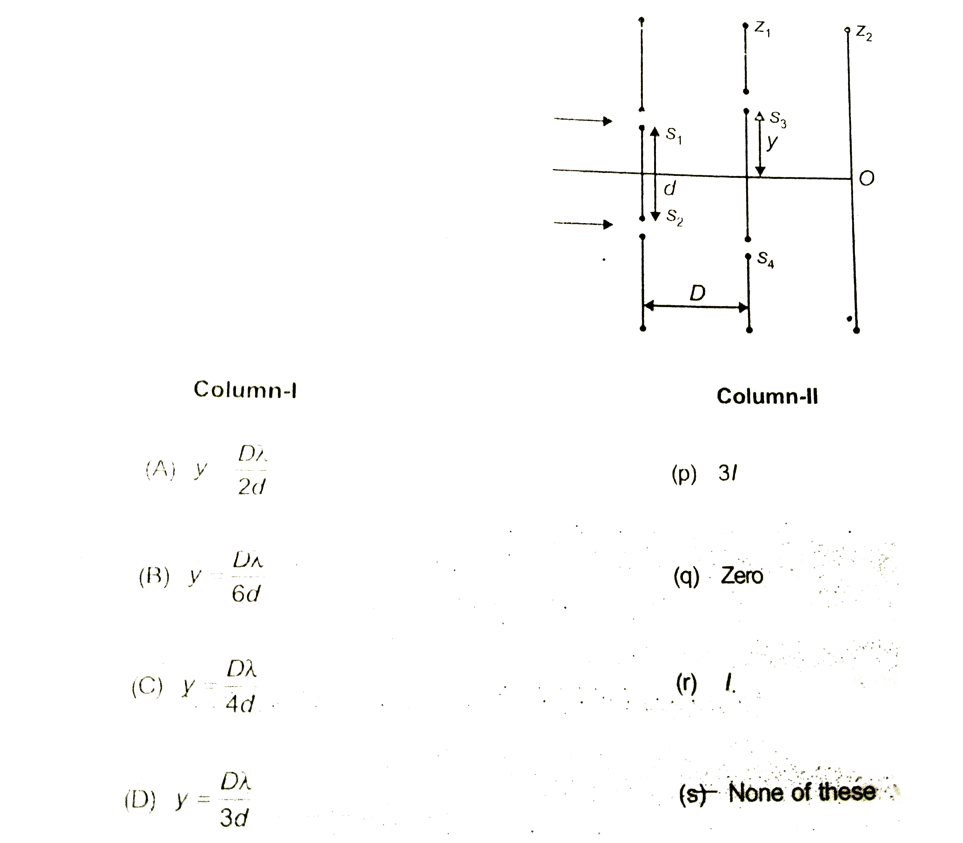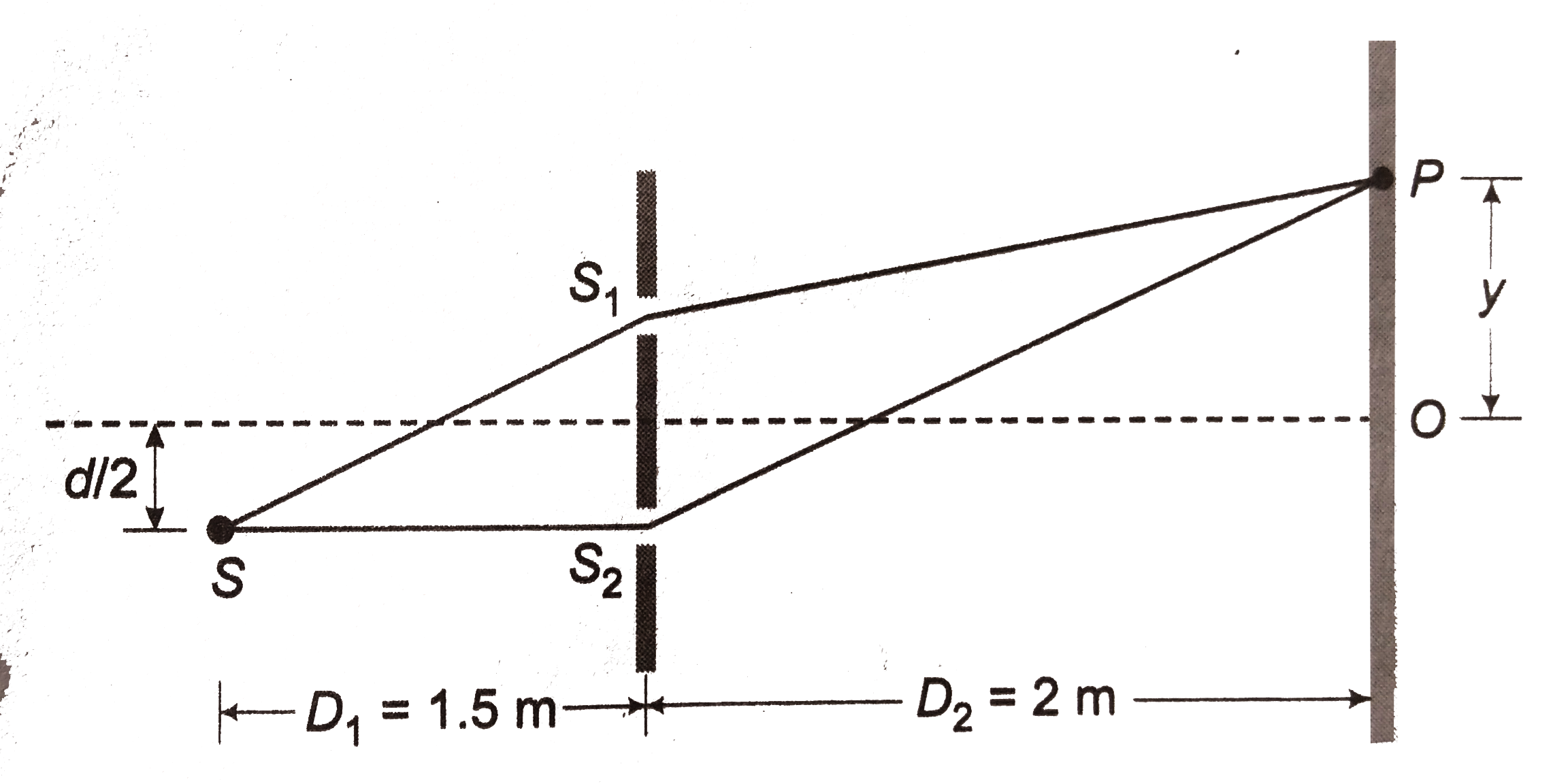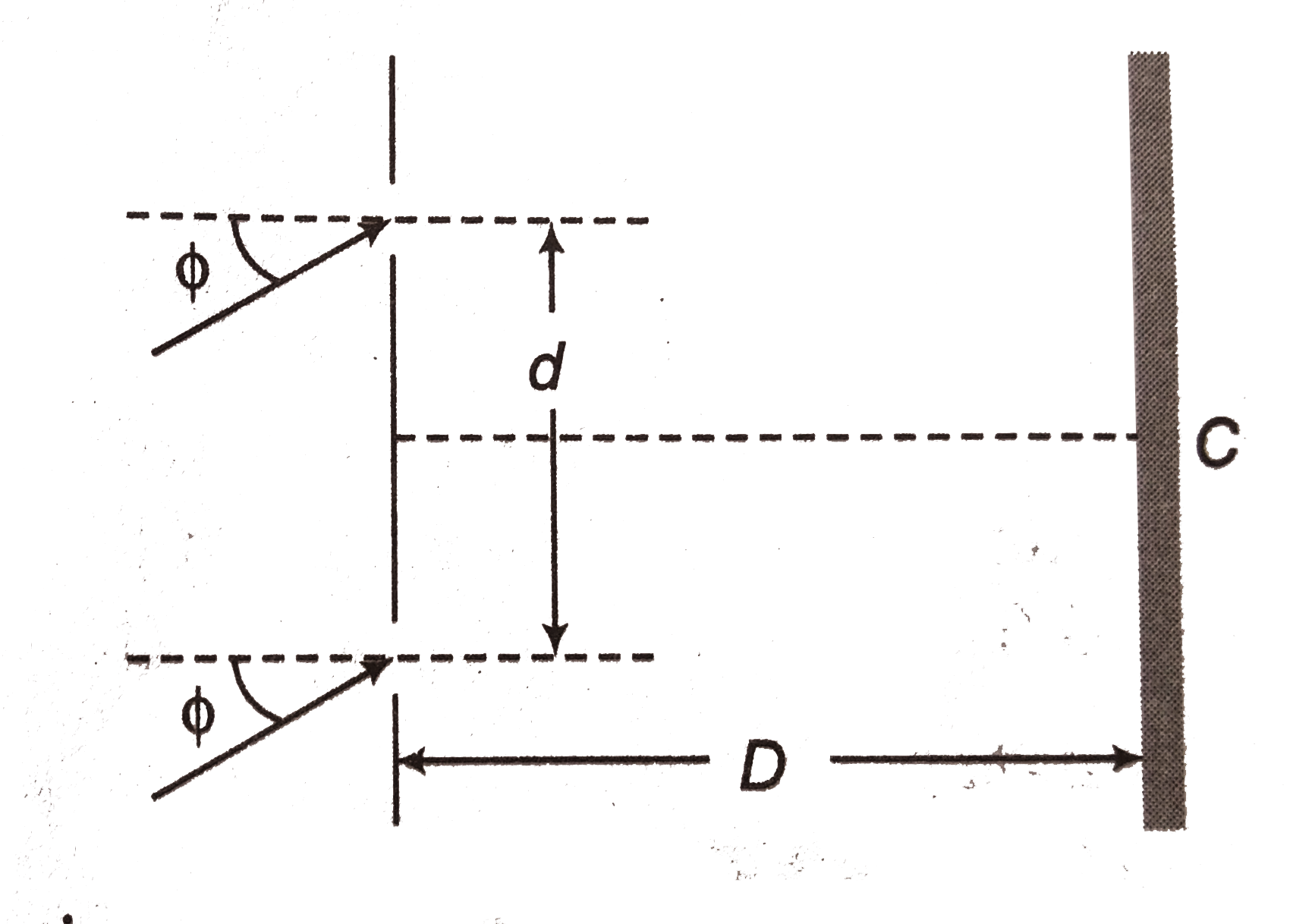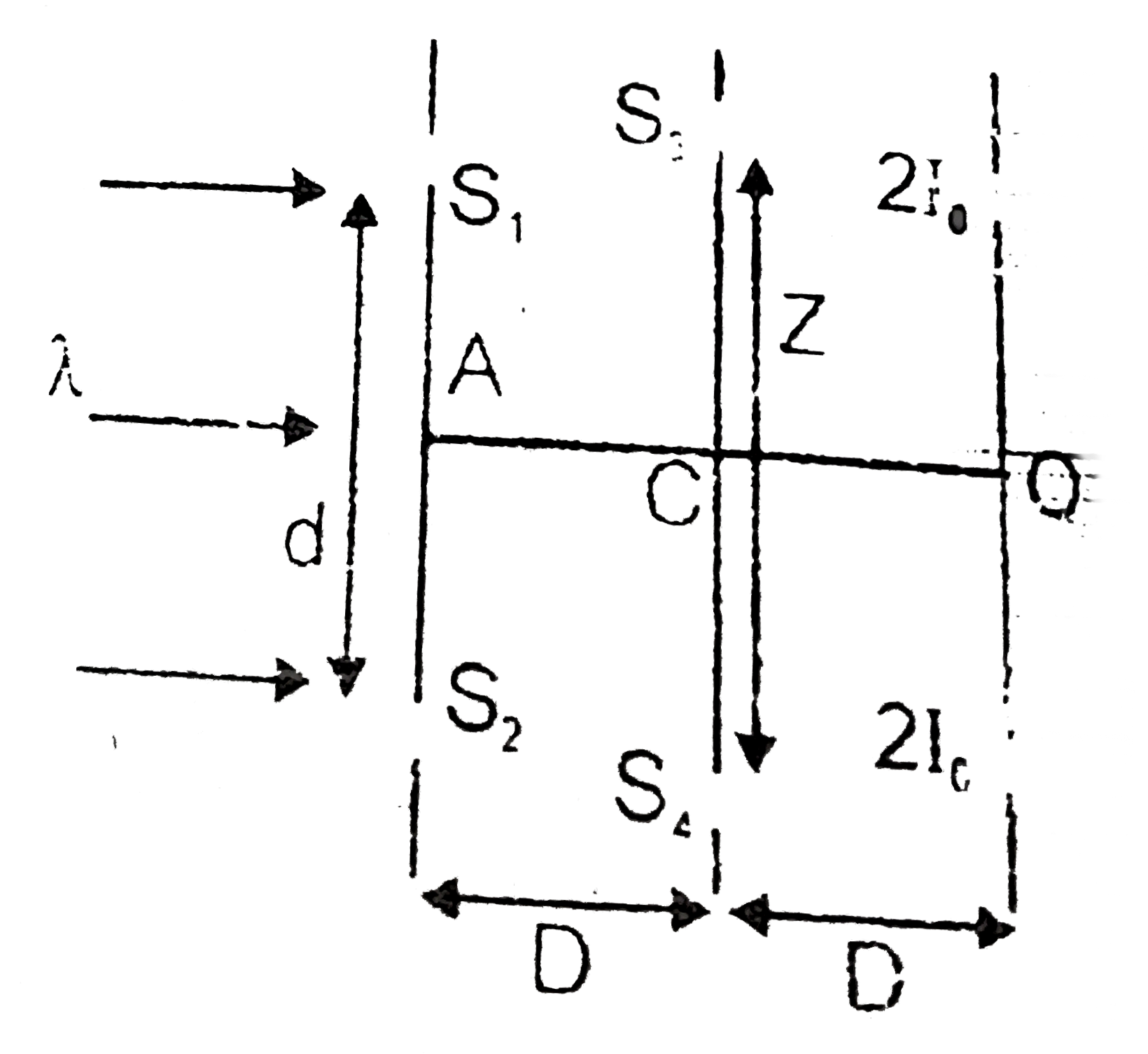In the arrangement shown in figure, z1 and z2 are two screens. Line PO is the bisector line of s1s2 and s3s4,s1 is removed, resultant intensity at O due to slits s1 and s2 is l. now z1 is placed. For different values of y given in column-I match the resultant intensity at O given in column -II.

The correct Answer is:A-q; B-p; C-s; D-r
Step by step video solution for In the arrangement shown in figure, z_(1) and z_(2) are two screens. Line PO is the bisector line of s_(1)s_(2) and s_(3)s_(4),s_(1) is removed, resultant intensity at O due to slits s_(1) and s_(2) is l. now z_(1) is placed. For different values of y given in column-I match the resultant intensity at O given in column -II. by Physics experts to help you in doubts & scoring excellent marks in Class 12 exams.
Updated on:21/07/2023Topper's Solved these Questions
- WAVE OPTICSBOOK - AAKASH SERIESCHAPTER - WAVE OPTICSEXERCISE - LECTURE SHEET (EXERCISE - I) (INTERFERENCE & YDSE) Level - II (ADVANCED) Level - II (straight objective Type Questions) Integer Type Questions
1 Video
- WAVE OPTICSBOOK - AAKASH SERIESCHAPTER - WAVE OPTICSEXERCISE - LECTURE SHEET Exercise - II DIFFRACTION (Level - I (Main) (Straight objective Type questions)
10 Videos
- WAVE OPTICSBOOK - AAKASH SERIESCHAPTER - WAVE OPTICSEXERCISE - LECTURE SHEET (EXERCISE - I) (INTERFERENCE & YDSE) Level - II (ADVANCED) Linked Comprehension type questions
6 Videos
- WAVE MOTION AND SOUNDBOOK - AAKASH SERIESCHAPTER - WAVE MOTION AND SOUNDEXERCISE - PROBLEMS (LEVEL - II)
97 Videos
- WAVESBOOK - AAKASH SERIESCHAPTER - WAVESEXERCISE - EXERCISE-III (Doppler effect :)
15 Videos
Similar Questions
In the YDSE, the monochromatic source of wavelength λ is placed at a distance d2 from the central axis (as shown in the figure), where d is the separation between the two slits S1andS2 .

(a)Find the position of the central maxima.
(b) Find the order of interference formed at O.
(c)Now, S is placed on centre dotted line. Find the minimum thickness of the film of refractive indes μ=1.5 to be placed in front of S2 so that intensity at O becomes 34th of the maximum intensity.
(Take λ=6000Å,d=6mm.)
View SolutionRatio of intensities in consecutive maxima in a diffraction pattern due to a single slit is
View SolutionLight of wavelengthλ=500nm falls on two narrow slits placed a distance d = 50×10−4 cm
apart, at an angle ϕ=30∘ relative to the slits as shown in figure. On the lower slit a transparent slab of thickness 0.1 mm and refractive index 32 is placed. The interference pattern is observed at a distance D=2m from the slits. Then, calculate

(a) position of the central maxima.
(b) the order of maxima at point C of screen .
(c)how many fringes will pass C, if we remove the transparent slab from the lower slit?
View SolutionA wave is described by the equation y=(1.0mm)sinπ(x2.0cm−t0.01s).
(a) Find time period and wavelength.
(b) Find the speed of particle at x=1.0cm and time t=0.01s.
( c ) What are the speed of the partcle at x=3.0cm, 5.0cmand7.0cm at t=0.01s?
(d) What are the speeds of the partcle at x=1.0cm at t=0.011 , 0.012and0.013s?
View SolutionWhen a train is approaching the stationary observer, the apparent frequency of the whistle observed as 100 Hz, while when it has passed away from the observer with same speed, it is 50 Hz. Calculate the frequency of the whistle when the observer moves with the train V = 330 m/s)
View SolutionIn the arrangement shown in figure, light of wavelength 6000 Å is incident on slits S_(1) and S_(2) have been opened such that S_(3) is the position of first maximum above the central maximum and S_(4) is the closest position where intensity is same as that of the ligth used, below the central maximum Point O is equidistant from S_(1) and S_(2) and O' is equidistant from S_(3) and S_(4) . Then intensity of inciden light is I_(0) Find the intensity at O' (on the screen).
View SolutionIn the arrangement shown in figure, light of wavelength 6000 Å is incident on slits S_(1) and S_(2) have been opened such that S_(3) is the position of first maximum above the central maximum and S_(4) is the closest position where intensity is same as that of the ligth used, below the central maximum Point O is equidistant from S_(1) and S_(2) and O' is equidistant from S_(3) and S_(4) . Then intensity of inciden light is I_(0) Find the intensity of the brightest fringe.
View SolutionIn the arrangement shown in Fig., slits S_(1) and S_(4) are having a variable separation Z. Point O on the screen is at the common perpendicular bisector of S_(1) S_(2) and S_(3) S_(4) . The minimum value of Z for which the intensity at O is zero is
View SolutionIn the arrangement shown in Fig., slits S_(1) and S_(4) are having a variable separation Z. Point O on the screen is at the common perpendicular bisector of S_(1) S_(2) and S_(3) S_(4) . If a hole is made at O' on AO' O and the slit S_(4) is closed, then the ratio of the maximum to minimum observed on screen at O , if O' S_(3) is equal to (lambda D)/(4d) , is
View SolutionThree sources of sound S_(1),S_(2) and S_(3) of equal intensity are placed in a straight line with S_(1)S_(2) = S_(2)S_(3) shown in the figure. At a point P, far away from the sources, the wave coming from S_(2) is 120^(@) ahead in phase of that from S_(1), Also, the wave coming from S_(3) is 120^(@) ahead of that from S_(2). What would be the resultant intensity of sound at P ?
View SolutionIn arrangement shown in figure, plane wavefront of monochromatic light of wavelength λ is incident on identical slits S1 and S2. There is another pair of indentical slits S3 and S4 which are having separation Z=λD2d Point O is on the screen at the common perpendicular bisector of S1S2 and S3S4.I1 is the intensity at point O Now the board having slits S3S4 is moved upward parallel to itself and perpendicular to line AO till slit S4 is on line AO and it is observed that now intensity at point O is I2 then I2I1 is :

View SolutionThree coherent sources S_(1), S_(2)" and" S_(3) can throw light on a screen. With S_(1) switched on intensity at a point P on the screen was observed to be I. With only S_(2) on, intensity at P was 2I and when all three are switched on the intensity at P becomes zero. Intensity at P is I when S_(1)" and" S_(2) are kept on. Find the phase difference between the waves reaching at P from sources S_(1) "and" S_(3) .
View Solution[D] Match the solutions in Column-I in Column-I with their osmotic properties in Column-II : {:(,"Column-I",,"Column-II"),("(a)",S_(1):0.1M" glucose,"S_(2)0.1M " urea","(p)",S_(1)andS_(2)" are isotonic"),("(b)",S_(1):0.1M " NaCl, "S_(2):0.1M Na_(2)SO_(4),"(q)","No migration of solvent across the membrane"),("(c)",S_(1):0.1" NaCl, "S_(2)=0.1MKCl,"(r)",S_(1)" is hypertonic to "S_(2)),("(d)",S_(1):0.1M CuSO_(4)", "S_(2):0.1M" sucorse","(s)",S_(1)" is hypotonic to "S_(2)):} [Note : Assume that the electrolytes are completely ionised.
View SolutionParallel monochromatic beam is falling normally on two slits S_(1) and S_(2) separated by d as shown in figure. By some mechanism, the separation between the slits S_(3) and S_(4) can be changed. The intensity is measured at the point P which is at the common perpendicular bisector of S_(1)S_(2) and S_(3)S_(4) . When z=(Dlambda)/(2d) , the intensity measured at P is I. and when z is equal to (4Dlambda)/(d) , Intensity is x l. Find x.
View SolutionIn the figure shown S_(1)O-S_(2)O=S_(3)O-S_(2)O=(lambda)/(4) , Intensity at O due to any one of the slits is I_(0) . What is the intensity due to all the three coherent sources S_(1), S_(2) and S_(3) ?
View SolutionLet S1,S2,S3 be three sets of complex numbers such that S1={z:1m>1) S2={z:|z−2−1|=3} S3={z:Re((1−i)z)=√2 , then Statement -1 The number of subsets of the set S1∩S2∩S3 is 2. Statement -2 Let z∈S1∩S2∩S3 then |z+1−i|2+|z−5−i|2=36 Statement -3 Let z be any point in S1∩S2CapS3andz1 be any point satisfying |z2−2−i|<3 , then (|z|−∣z1+3) lies between -3 and 9 ,.
View Solution

